How to Choose Sun-Blocking Shades for Windows in Direct Sunlight
Choosing Window Solar Shades, Roller Shades, or Cellular Shades to Block Sunlight
Sunlight is wonderful, but too much direct sun coming in through your home or business’s windows can become unpleasant. Not only can it get way too hot, but it’s uncomfortable to sit in, exposes you to harmful UV rays, can cause problematic glare on screens and surfaces, and can cause color fading and faster wear on your furniture, rugs, and art.
Not to mention, according to the United States Department of Energy, about 76% of sunlight that falls on even standard double-pane windows enters and becomes heat. That is a significant additional cooling cost.
So what’s the best way to block unwanted direct sunlight?
Well, that depends on what you’re looking for practically and aesthetically in a window shade!
Blocking Window Sunlight without Obstructing the View
Especially in offices, you still want a clear look at the view outside your window. Maybe it overlooks your beautiful yard, and privacy is not really an issue. In cases like these, solar window shades are a perfect solution to block sunlight and heat without blocking your view.
Allowing filtered sunlight boosts peoples’ moods, alertness and productivity, after all!
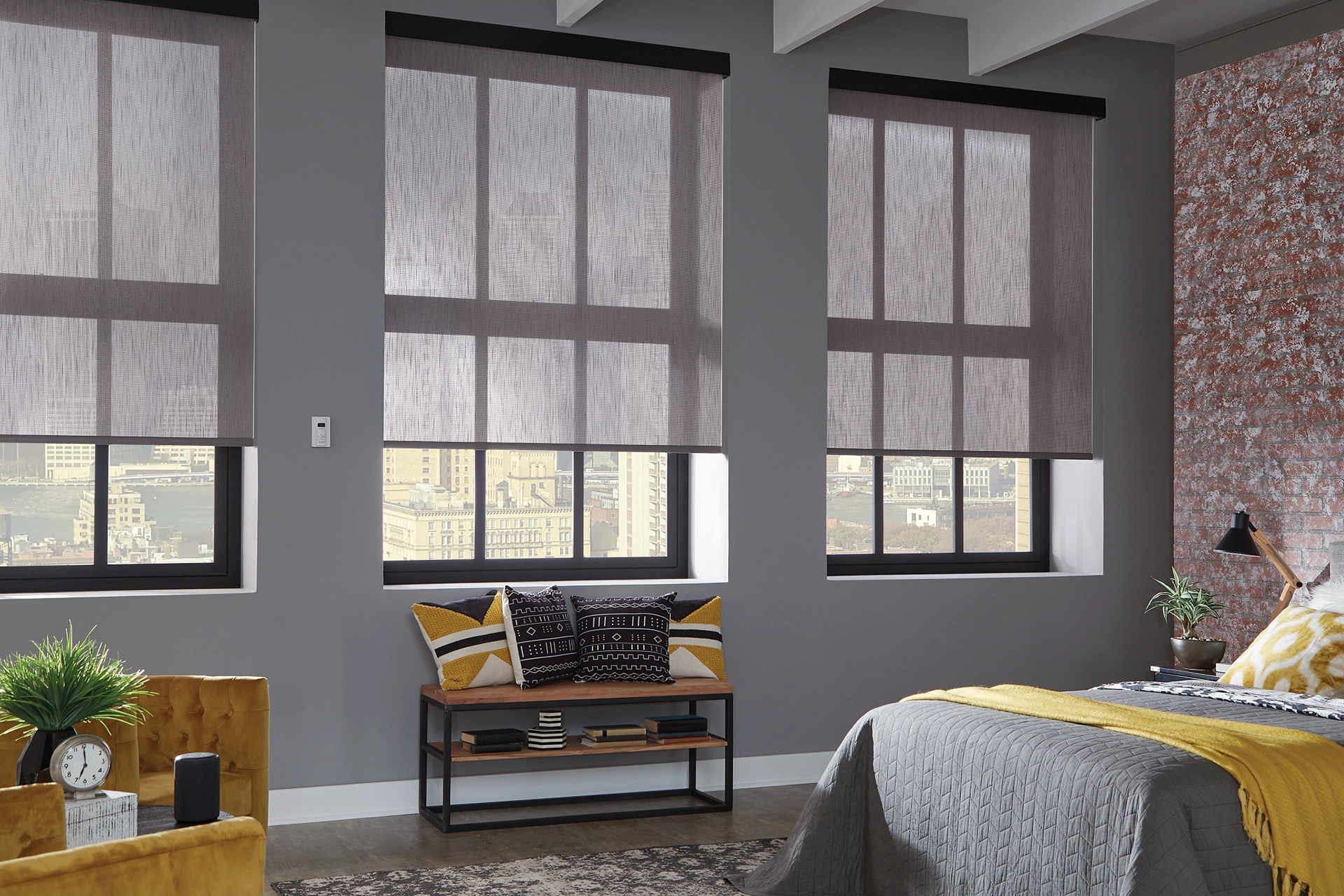
Graber Solar Shades
Solar shades are incredibly versatile due to their ability to have custom levels of transparency, so you can choose how much sunlight still comes through the window. That level of transparency is also directly proportional to the amount of UV rays blocked by the sturdy, modern material, hence the word “solar” – it’s what they’re made for! For example, 10% “openness” (amount of light let through) translates to 90% of UV rays blocked, allowing you to find your perfect balance of natural light with protection for your space.
Solar shades grant no privacy at night.
Privacy during the night is a consideration that may dictate where these are used, as they do allow a view at night into lit rooms, so it’s not a good choice for a bathroom unless there is no external line of sight. Graber provided a wonderful example of the difference in privacy during night and day:
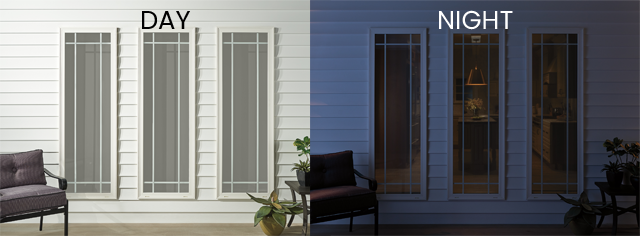
Graber Solar Shades
Solar shades function very similarly to roller shades, but their material is notably different.
Their appearance, however, is sleek, modern, and increasingly popular. A tight fit is necessary in the window frame to prevent gaps that would allow sunlight through with this low-profile choice.
They’re also a more economical option than roller shades, making them a great choice for many people.

Graber Exterior Solar Shades
Solar Shades Can Also Be Installed Externally!
If you have a patio, cabana or other outdoor area that requires a break from the sun, external solar shades are a wonderful solution. When retracted, they can go into top hardware to become almost invisible.
If you add motorized options, including even solar-powered motorized shades, you can easily cool off an exterior area before you go outside. Depending on your technology in your home, you can even set timers to allow external solar shades to automatically lower when the sun hits, protecting your outdoor furniture, or blocking windows or even large, open doors to prevent heat from the sun from hitting them.
Connecting solar shades to a SmartHome system can open up a world of programmable options that can allow you to control heat gain even when you’re not home.
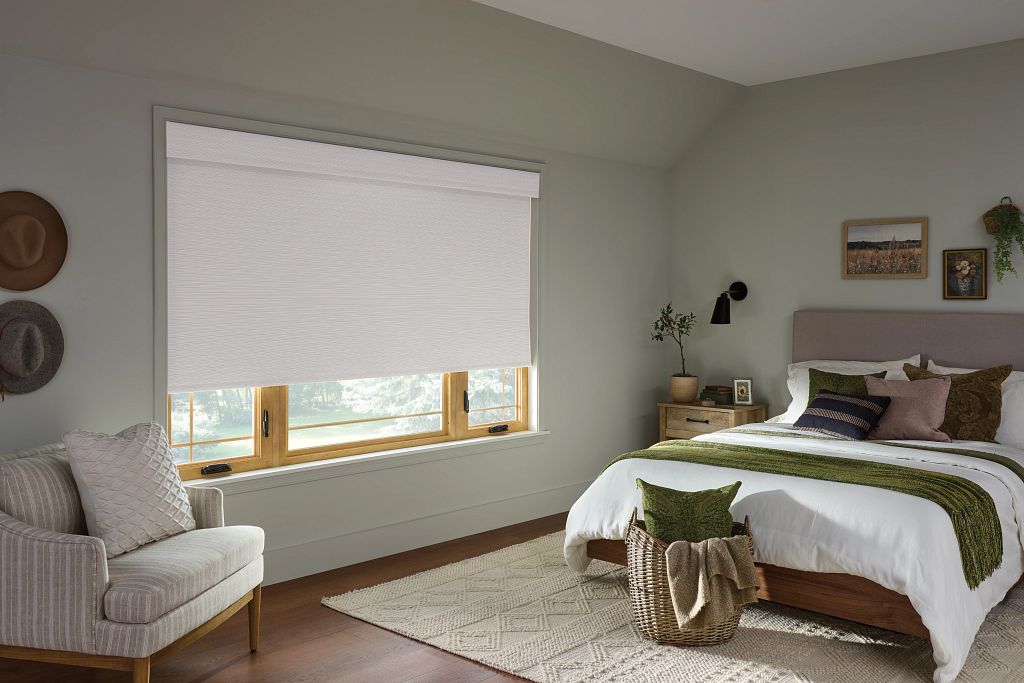
Horizon Roller Shades
Blocking Sunlight with Roller Shades
Solar shades are often confused with roller shades. It’s not surprising, because they’re incredibly similar. Roller shades are also solid sheets without pleats, slats, or veins, and fit tightly into the frame with a low profile.
Unlike solar shades, roller shades are not transparent. They do completely block the view, including at night. They come in a variety of opacities, but none as clear as solar shades.
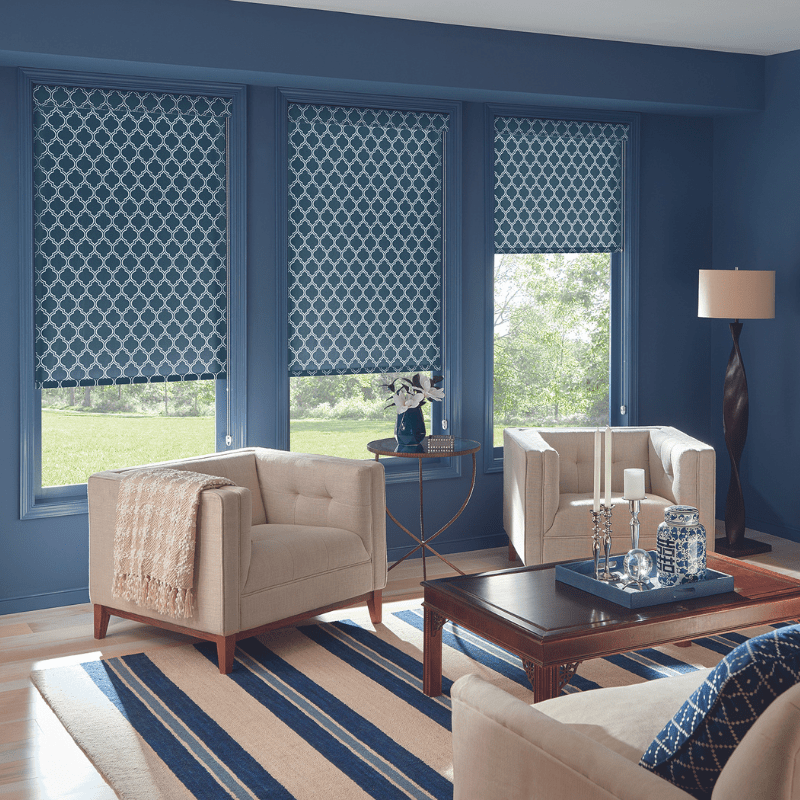
One reason roller shades are so popular is not only cost, but style!
Roller shades can be designed with many different colors, styles and patterns so they can easily match your home’s decor, accent items, or furniture with ease.
Some patterns can even have matching accent pillows made so the room is coordinated!
While they can’t be outdoors like solar shades, they’re a great interior option and can also be motorized and connected to SmartHome systems. Cord-free options are also much safer around children and pets, as cords pose a hazard of strangulation.
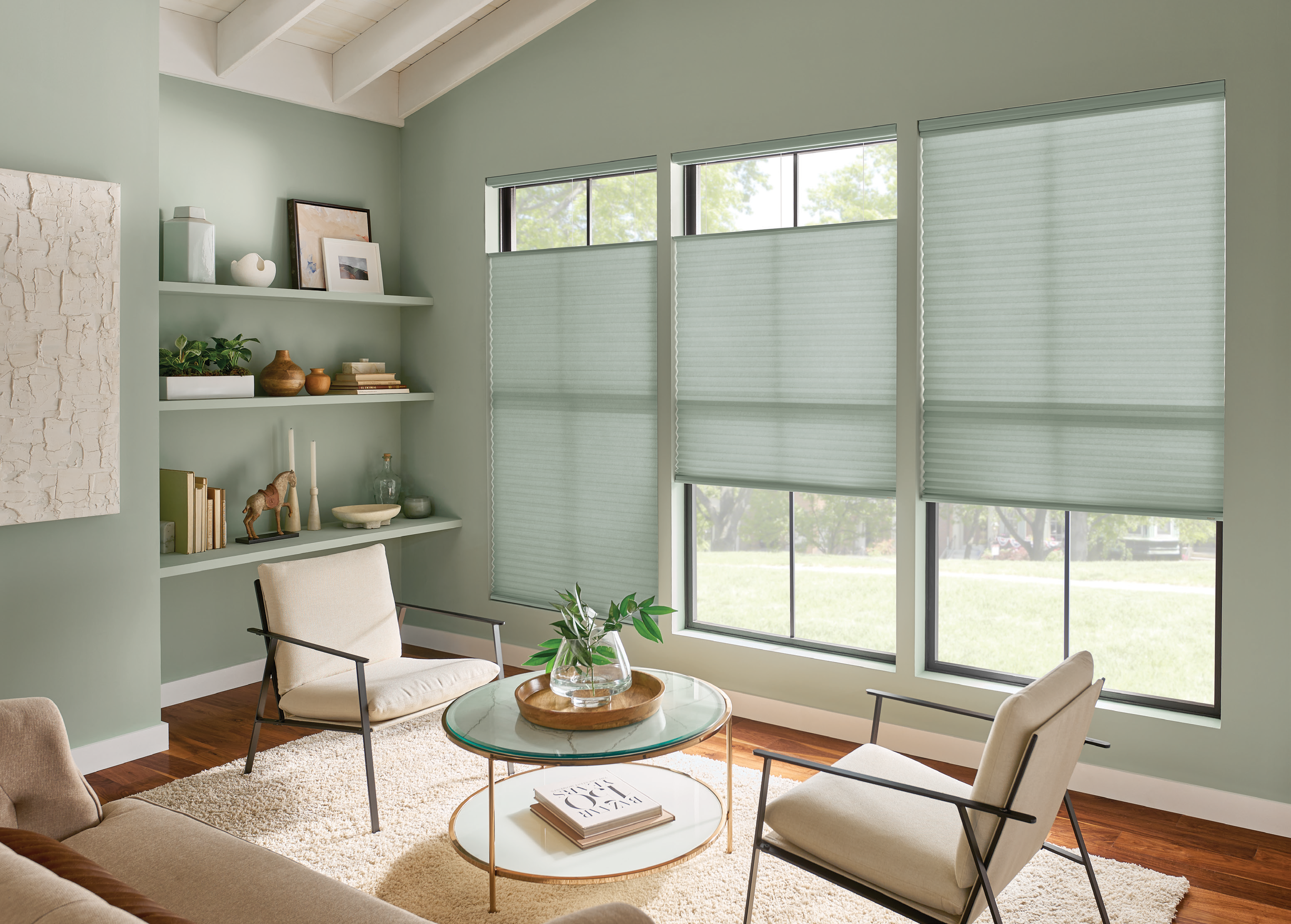
Graber Cellular Shades
Extra Thermal Control to Reduce Heat Gain with Cellular Shades
If heat is your biggest concern then cellular shades, also known as honeycomb shades or honeycomb blibs, might be your perfect solution. Unlike the solar and roller shades, cellular shades aren’t flat. They are made of multiple layers that have pockets of air inside the cells that collapse when retracted for a flat but wider profile than roller or solar shades.
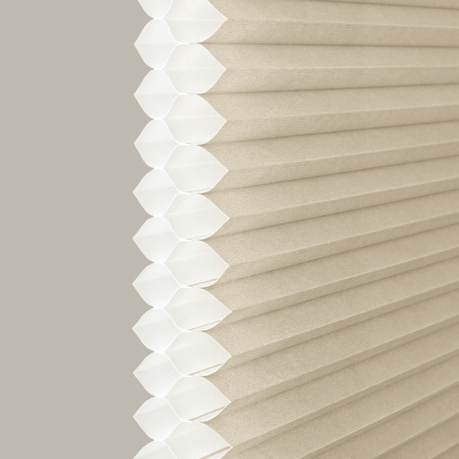
Where their magic truly lies is in those cells, which come in a large variety of sizes and options. The best insulation comes from double cell shades, which means there’s two layers of cells, one on the front and the back.
Single-cell means there is only a single layer of pockets making up the entire width of the shade.
While double-cell is certainly preferable for controlling temperature, some people prefer the look of the larger cell, as well as the lower cost.
Both single- and double-cell shades can provide some natural light when closed, and both provide privacy at night as well.
Cell-size is another factor that makes these a unique choice when looking to really control your heat gain. Each individual cell’s pocket of air captures heat that otherwise would have entered your home. The more cells there are, the more energy efficient the shade is and the lower the temperature in your room, especially by the window.
The Department of Energy states that tightly-fitting cellular shades can reduce unwanted solar heat through windows by up to 80%, reducing the total solar gain to 15% or less. That’s massively impactful if you have spaces that get really hot in the sun.
They truly can be beautiful in many spaces, and are even a wonderful choice on large doors.
Alternative Energy-Efficient Window Shade Options
If you are looking for a stylish but still versatile way to “frame” your view, you may also want to consider energy-efficient curtains. Window curtains or drapes can give a wider range of options on the sunlight-blocking spectrum as they generally extend past the window openings for a near or total blackout effect, if desired. Curtains and drapes may also offer stronger heat-blocking protection than other styles of shades, though may sacrifice your view during the hottest parts of the day.
There are even more options, but here’s our top picks! We hope you enjoyed learning more about window coverings for windows in direct sunlight.
Ready to choose shades for your Los Angeles area home?
We hope this guide to controlling sunlight and heat with shades has been helpful! We know it’s a lot to take in, so if you’d like some expert guidance in selecting the right options for your windows, get in touch with us for a free consultation with a design expert. We’ll help you block that light and heat in style customized just for you.
